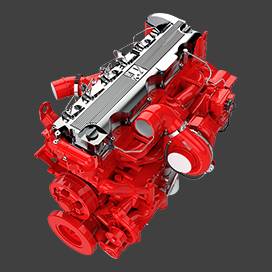Nov . 30, 2024 00:47 Back to list
brake drum weight
Understanding Brake Drum Weight Importance, Factors, and Implications
Brake drums are essential components of a vehicle's braking system, primarily found in older models and certain types of trucks and heavy equipment. The weight of a brake drum plays a crucial role in its functionality, performance, and the overall dynamics of a vehicle. In this article, we will explore the importance of brake drum weight, the factors that influence it, and its implications for vehicle performance.
Importance of Brake Drum Weight
The weight of a brake drum is a significant factor affecting a vehicle's braking efficiency and overall performance. Heavier brake drums generally provide increased thermal mass, allowing them to absorb and dissipate heat more effectively during braking. This characteristic is crucial in preventing brake fade, which occurs when brake components overheat and lose their effectiveness. The ability of a brake drum to manage heat can prolong the life of brake pads and improve overall safety by maintaining consistent braking performance under various conditions.
Moreover, the weight of the brake drum influences the unsprung weight of a vehicle. Unsprung weight is any mass not supported by the vehicle's suspension, such as wheels, tires, and brake components. A higher unsprung weight can lead to poorer ride quality, decreased handling, and increased wear on suspension components. Therefore, while heavier brake drums may offer thermal advantages, they can also negatively impact the vehicle's handling and comfort.
Factors Influencing Brake Drum Weight
Several factors contribute to the weight of brake drums, including materials, design, and manufacturing processes.
1. Materials Used Brake drums are typically made from cast iron due to its excellent thermal conductivity, durability, and resistance to wear. However, some modern applications use lighter materials such as aluminum or composite materials, which can significantly reduce weight without sacrificing strength. The choice of material directly impacts the overall weight of the brake drum.
2. Design and Size The size and design of the brake drum also play a vital role in its weight. Larger drums typically weigh more but provide increased surface area for effective braking. The design can include features such as ribbing or ventilation, which can help in heat dissipation and reduce weight while maintaining structural integrity. Manufacturers often conduct complex calculations to determine the optimal size and shape of brake drums to balance weight and performance.
brake drum weight

3. Manufacturing Processes The production method influences the final weight of brake drums. Techniques such as casting, forging, and machining contribute to the weight variations. Innovations in manufacturing processes, like the use of computer-aided design (CAD) and advanced metallurgy, have allowed for the creation of lighter, stronger brake drums that do not compromise safety or performance.
Implications for Vehicle Performance
The weight of brake drums has several implications for vehicle performance. As mentioned earlier, the thermal management characteristics of heavier drums help maintain performance during rigorous use. However, the increased unsprung weight can lead to several challenges.
1. Handling and Stability Vehicles with excessive unsprung weight may experience reduced handling capabilities. The additional weight affects the responsiveness of the suspension system, leading to a less stable ride, particularly during cornering or abrupt maneuvers. Manufacturers may need to engineer suspension systems that can compensate for the added weight to ensure optimal handling.
2. Fuel Efficiency Heavier components generally contribute to a vehicle's overall weight, adversely affecting fuel efficiency. Although brake drums may not be the sole contributor to increased vehicle weight, their weight can add to the cumulative effect. For automotive manufacturers focused on fuel efficiency, minimizing weighable components becomes a priority.
3. Brake Performance Over Time The longevity of a vehicle's braking system can be affected by brake drum weight. Heavier drums may experience less wear over time due to their ability to dissipate heat, yet the increased unsprung weight could lead to earlier failure of associated components, such as tires and suspension parts.
Conclusion
In summary, the weight of brake drums is a critical aspect of vehicle design and performance. While heavier drums offer advantages in thermal management and durability, they also bring challenges related to handling, fuel efficiency, and overall vehicle dynamics. Manufacturers are constantly seeking a balance between weight and performance, employing innovative materials and design techniques to create brake drums that are not only effective but also contribute positively to the vehicle's overall operation. Understanding these dynamics is essential for both automotive engineers and vehicle owners who seek to optimize their vehicle's braking system for performance, safety, and longevity.
-
HINO Industrial Solutions - ¡Ң���ຽ��е��������˾ | Advanced Efficiency&Customization
NewsJul.13,2025
-
HINO Industrial Efficiency Solutions - ¡Ң���ຽ��е��������˾
NewsJul.13,2025
-
HINO Industrial Solutions - ¡Ң���ຽ��е��������˾ | Advanced Technology&Reliability
NewsJul.13,2025
-
HINO Industrial Efficiency-Jiangsu Hino Industrial|Productivity Optimization&Cost Reduction
NewsJul.12,2025
-
HINO-¡Ң���ຽ��е��������˾|Advanced Industrial Solutions&Energy Efficiency
NewsJul.12,2025
-
Premium Brake Drum Iveco – Durable Drum Brake Drum & Brake Shoe Solutions
NewsJul.08,2025
